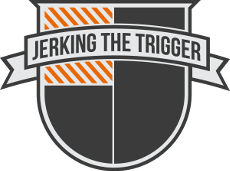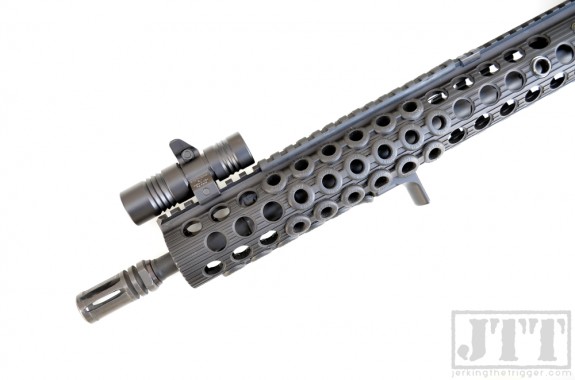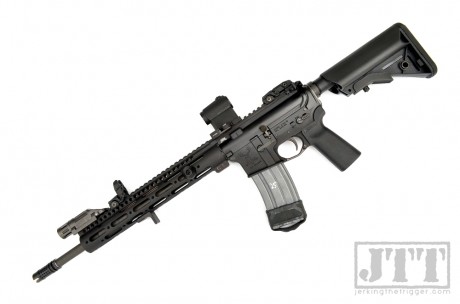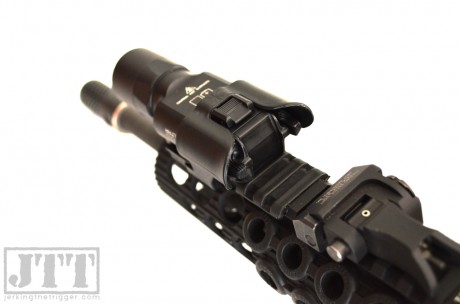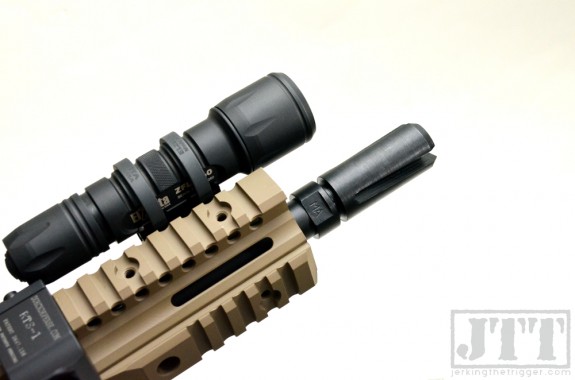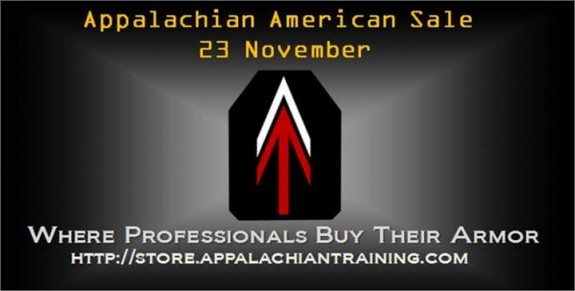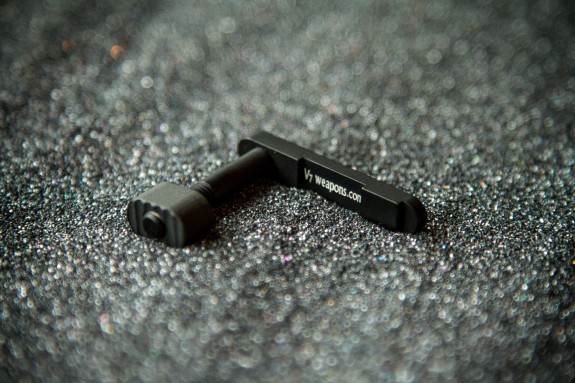Your targets aren’t going to hold themselves up! TacStrike has a Thanksgiving special on their Arch Frame Target Carriers for $26.50.
Archive | November, 2013
Extended Hand Guards – Cool Guy Fad or Useful Concept?
I was a late adopter of the current trend of using long hand guards over a low profile gas block on an AR-15. In fact, I feel like I am still trying it out in spite of the fact that most of my carbines are configured that way now. Maybe you are like I was, holding out to see if the concept really panned out. Hopefully, this article will help you determine if it is something you want to pursue on your own carbine.
Disadvantages
The biggest downsides to this concept revolve around the loss of the standard, “A-frame” front sight base (FSB). Many shooters don’t realize how important to the overall reliability of the carbine that the FSB can be in its role as both front sight and gas block.
- The FSB is tough to beat as a front sight because having your front sight attached to the barrel is a very advantageous. If the barrel flexes, the front sight moves with it, which is ideal. If you have it mounted on a free float rail and the rail flexes (and they certainly do flex), your front sight is now moving independently of the barrel. While I still prefer to have my front sight tied to my barrel in theory, in practice it isn’t that big of a deal since the sights are relegated to a backup role on my ARs.
- A properly executed FSB is a darn good gas block. It is pinned in place, making it all but impossible for it to be knocked out of alignment, cutting off the gas to the action. A correctly executed FSB will use taper pins to secure it to the barrel. These taper pins serve to draw the gas block down onto the barrel to create a tight gas seal which can enhance reliability.
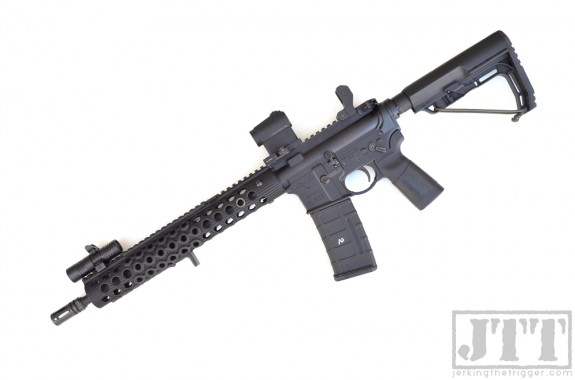 Some aftermarket low-profile gas blocks clamp to the barrel. I think this is less than ideal. The best low profile gas blocks are cut down FSBs for the reasons mentioned above or pinned low profile gas blocks like those used by Daniel Defense, Centurion Arms, and others. If those are not an option, gas blocks that secure via screws that come up from the bottom can help draw the block down onto the barrel.
Some aftermarket low-profile gas blocks clamp to the barrel. I think this is less than ideal. The best low profile gas blocks are cut down FSBs for the reasons mentioned above or pinned low profile gas blocks like those used by Daniel Defense, Centurion Arms, and others. If those are not an option, gas blocks that secure via screws that come up from the bottom can help draw the block down onto the barrel.
At one point, cost and availability were potential inhibitors of this concept. They still are, but to a lesser extent. There are now very affordable rail options that are suitable for this concept and many AR-15 manufacturers are offering complete carbines and uppers that are already configured this way.
Weight can be a disadvantage depending on the hand guard that you choose, but the potential is there to actually cut the total weight if you choose the right components.
Advantages
I will admit up front that some of these advantages are dependent on the way you shoot. For instance, if you do not currently place your support hand as far forward as you could and you do not desire to do so, some of what is listed below will not necessarily be advantageous for you.
An extended rail allows the shooter to place their support hand closer to the muzzle end of the barrel which is physically advantageous in terms of recoil control. This is why I originally tried the concept and likely the most common reason that people go with an extended hand guard.
I have found that longer hand guards can be advantageous in field shooting positions or when shooting on/around a barricade. The longer hand guard gives you additional leeway to ensure that your barrel does not contact whatever you are braced against. It also gives you freedom to move your hand forward or back to better suit awkward positions. It only takes one range trip spent working barricades to see the merit of such a concept.
Extended hand guards also allow the weapon mounted light to be placed on the 12 o’clock rail. I have written previously on the advantages of this. I think you can make a pretty strong case that this is the best location to mount a light assuming you don’t need some kind of visible or IR laser aiming device.
If you are using a laser aiming device, an extended rail can really help make room for things like visible lights, front sights, and other important stuff like your hand. If you have ever tried to fit all of these items on a 7” or 9” hand guard, you know how cramped it can get.
Lighter weight can be a great advantage of the extended hand guard concept. I sang the praises of the standard FSB above, now I will uncover its dirty little secret… It is really heavy. Cutting it down for use under an extended rail or replacing it with a low profile block will save weight even when you add the weight of a rail mounted front sight back into the mix. Choosing a light weight extended rail option will also save weight. In fact, we live in a sort of golden age for the AR-15 where there are affordable extended rail options that actually weigh less than plastic hand guards.
I have also come to appreciate the easy access to the barrel that most extended hand guards afford. If you have ever tried to deal with rust under your hand guards, you will appreciate the fact that many extended hand guards can be slid forward and off the rifle even if you have a permanently attached muzzle device.
Wrap Up
I may have been slow to warm to them but I have come around. It only took a few moments training on a barricade for me to see the light. I wouldn’t say that they are must-haves but I don’t think this is a fad. If you have the means, I highly recommend that you give an extended hand guard setup a try.
Appalachian American Sale is Live at Appalachian Training
The Appalachian American Sale, Appalachian Training’s only sale of the year, is live right now and it is pretty epic. They have Mayflower R&C APCs for less than $170, Velocity Systems Armor Plates for $100 off the normal price, and more! Stop what you are doing and check out Appalachian Training.
Handy Take Down Pin Removal Trick
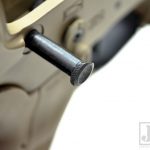 If you are thinking about installing the excellent Battle Arms Development Enhanced Pin Set but you don’t want to break the staking on your castle nut, YouTube channel nsz85 has the answer. They posted this walk-through of how to remove the take-down pin without having to remove the castle nut and end plate.
If you are thinking about installing the excellent Battle Arms Development Enhanced Pin Set but you don’t want to break the staking on your castle nut, YouTube channel nsz85 has the answer. They posted this walk-through of how to remove the take-down pin without having to remove the castle nut and end plate.
The process is fairly simple and uses tools that you are likely to have on hand like a jewelers screwdriver and the pivot pin. Give it a try!
V7 Ultra-Light Mag Catch/Release
V7 Weapon Systems continues their all out assault on your AR-15’s excess weight. Their new V7 Ultra-Light Mag Catch/Release offers a 48% weight reduction versus the standard parts. The mag catch engagement point is made from the same super alloy that they use on their V7 Lightweight Castle Nut that they claim is 30% stronger and harder than 7076 T6 aluminum. The button and threaded post is machined from 7076 T6. It is hard anodized and completely corrosion resistant.
I am kind of interested to see what weight saving parts V7 Weapon Systems will come up with next. Check out the V7 Ultra-Light Mag Catch/Release at V7 Weapon Systems.
